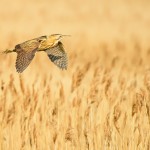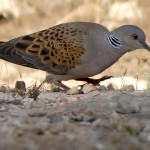
I was in the library at The Lodge the other day, reading for writing.
It’s inevitable that I bump into quite a few people I know, and have a few conversations about life, the universe and everything. They are mostly conversations about birds and nature conservation.
Two of them illustrate the scale of change in bird populations that has occurred during my life.
As Simon Wootton and I passed in the corridor we stopped and, after the usual pleasantries, talked about Bitterns as Simon has been a leading figure in the monitoring of this bird over many years. This bird was heading for extinction and reached a low of 11 booming males in 1997 just before I became the RSPB’s Conservation Director. Now there are over 140 booming males and there are four times as many Bitterns in Somerset as there were then in the whole of the UK. It’s a great conservation success.
 A little later I met Tony Morris and we talked about the difficulty of seeing a Turtle Dove these days (well, these summers). This used to be a common sight in the East Anglian countryside (although, despite the words of the carol, not in the 12 days of Christmas since this is a trans-Saharan migrant) but now is a bird that many have to search for if they are to see it at all.
A little later I met Tony Morris and we talked about the difficulty of seeing a Turtle Dove these days (well, these summers). This used to be a common sight in the East Anglian countryside (although, despite the words of the carol, not in the 12 days of Christmas since this is a trans-Saharan migrant) but now is a bird that many have to search for if they are to see it at all.
The size of the task is very different for these two species. Bitterns only live in a few places – wetlands with lots of fish and reedbeds, and so getting those sites well-managed, once you discover what good management is, is, in a way, relatively straight forward (though that is not to diminish the huge amount of work involved). Turtle Doves, are birds of the ‘wider countryside’ and therefore their fate is in the hands of many individuals, and in those of the CAP across the whole of the EU.
Where conservationists can do the job themselves they tends to succeed, where they need to influence government and wider policies then success is delayed as the task is much greater.
As I drove home I was pleased to see a covey of Grey Partridges, a noteworthy sight in my neck of the woods, and saw several lovely Red Kites in the skies, a much more familiar sight these days.
The success of the conservation of Bitterns and Red Kites show what can be done; the parlous state of Grey Partridge and Turtle Dove shows what still needs to be done. But 30 years ago, the current status of the Bittern and Red Kite would have seemed unachievable – yet they have been achieved. Who knows what successes lie ahead, though they will not be easily attained.
[registration_form]
I thimk you’ve encapsulated it nicely here, Mark, and from what I see in the world around me it’s the same with other taxonomic groups, as well as in human affairs:
Wherever good people focus in on one single issue and concentrate a lot of effort on it excellent results can be achieved against the tide.
But in the wider world out there the way economy and society is structured has such inbuilt contradictions and inequalities that the overall trend militates in favour of “Growth”, Business-as-Usual with the perpetual motion mirage of continually accelerating industrialisation and destruction of natural ecosystems.
What that suggests to many is that all of us need to think through what we each should be doing differently in our own lives and our surroundings to create change towards better, healthier directions.
Re: “the difficulty of seeing a Turtle Dove these days” Did he mean this literally. They used to sit on the top of dead elm saplings and pine tree tops round the field while I hung out the washing. Now the ones we hear hide. I did see one land in a tree and it smartly snuffled along the branch so it had leaves between me and it. They now call in the tree overhead but you never can see them. o other researchers notice this behavior it suggests to me that there is some “natural” selection taking place along their migration route.
Interesting observation Andrew but doesn’t concur with my own experiences. I return annually to a couple of sites that I rely on to see these enigmatic birds but I’m seeing less each year and I’m seeing every bird I hear; usually perched in the open in the tops of dead trees purring. My personal observation is that they just keep getting fewer. Very sad.
Do you think that the barn owl is half way between the bittern and the turtle dove – conservation wise not taxonomically speaking?
Several local farmers are really pleased to see barn owls but are less interested in other ( smaller, less obvious) species. One farmer is interested in the Little Egrets on his fields but not on the peregrine on the pylon also on his field that he can only see as a dot. However, his son is putting up an owl box and I have every hope that when his turn comes he will farm with some sympathy for wildlife.
J just looked at the picture of the Somerset levels in your last bittern blog. What amazingly intensive management. Lets just “Re-wild” it and get back to an “natural” population.
Re-wilding” what a waste of money on conferences etc for a bit of self promotion. It just needs good research,
Explain – whose self promotion?
Andrew,that picture is not representative of Somerset Levels at all.
It simply shows a area that has had the peat removed and is now frowned on as bad practice,you could hardly have picked a worse picture to try and prove a point.LOL.
Ironically it has made a great bird reserve but only because the peat has been removed which all conservationists seem against these days.
Unfortunately, Mark, conservation agencies don’t always do a good job of managing land for struggling species. A Hawk & Owl Trust reserve near my home currently has fields that look like bowling greens and are still full of grazing sheep and cattle! Do they think that barn owls, kestrels and harriers don’t need to eat in the winter? Wyke Down in Dorset is managed with sheep grazing by its private owner who maintains a suitable turf for small mammals all year round which provide good hunting for owls and raptors, so it can be done.